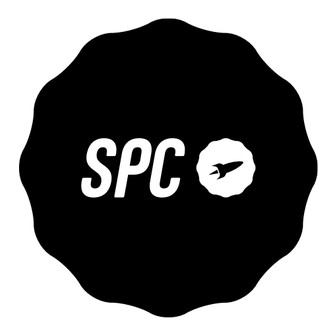
Subscribe to Our Youtube Channel
Summary of Contents for SPC Belgravia Tilevector Plus
- Page 1 Belgravia Tilevector Plus Installation, Operation & Maintenance Manual IOM 85 Issue 2...
-
Page 2: Table Of Contents
IOM 85 Issue 2 – Belgravia Tilevector Plus Contents Page General Description Receipt and Preparation Installation Mounting general Installation in suspended/T bar ceiling | Installation in finished/plasterboard ceiling | Free-hanging Fluid piping Wiring Control Commissioning Maintenance Fault finding Disposal... -
Page 3: General
IOM 85 Issue 2 – Belgravia Tilevector Plus 1. General 1.1 Description The Belgravia Tilevector Plus is a self-contained required. The unit is designed for use against low fan convector heater designed for recessed grade hot water temperatures associated with installation into suspended T bar or plasterboard heat pumps and condensing boilers. ceiling. The unit can be freely suspended if Size WxLxH 595mm x 595mm x 260mm Weight 20kg Power supply 230V/1Ph/50Hz Fan type Forward curved double inlet Motor type EC (brushless DC) Maximum power draw... - Page 4 IOM 85 Issue 2 – Belgravia Tilevector Plus Figure 1. Ceiling mounting Figure 2. Mounting hole positions...
-
Page 5: Installation In Finished/Plasterboard Ceiling
IOM 85 Issue 2 – Belgravia Tilevector Plus 2.3. Installation in finished/plasterboard ceiling The same four suspension holes on the flanges of just above the level of the plasterboard. the casing are used as above and the ceiling needs The grille is located just below the plasterboard to be marked out and appropriate anchors fitted. and pushed upwards such that the flanges of the The plasterboard needs to be cut prior to installing grille pass into the unit itself. A 3.5mm bit should the unit; an aperture of 575mm x 575mm is be used in 4 places (2 on one side, 2 opposite) and required. drilled through the grille and unit sides to be used to hold the grille in position. The 3.5mm holes in The unit should be passed through the the grille flange should be opened out to 5mm and plasterboard and secured to the ceiling using rod No.8 screws used to hold it in position. or wires attached to the anchors. The height of the unit should then be adjusted such that it finishes 2.4. Free-hanging While the units are intended for recessed as above and the grille attached to the unit as in installation they can be free-hanging if required. the instructions for plasterboard installation given The units should be suspended from the ceiling above. 3. Fluid piping... - Page 6 IOM 85 Issue 2 – Belgravia Tilevector Plus Figure 4. Coil and pipe connections Figure 5. Flow connection at top, return connection closest to grille...
-
Page 7: Wiring
IOM 85 Issue 2 – Belgravia Tilevector Plus 4. Wiring Units incorporate high efficiency EC motors from a dedicated fused/switched spur. An earth directly coupled to the fan. Power to the units connection must be provided as part of the power is from a standard 230V/1Ph/50Hz supply and supply. transformation and rectification is provided by the Electrical connections, both power and control, motor. The table above gives details of the power are made direct to a terminal block in the electrical draw. housing inside the unit. Knock-outs are provided All wiring should be undertaken by a certified for cable entry or holes can be cut in other electrician in line with the latest version of the place ensuring that no internal components are wiring regulations. The unit should be isolated damaged. All cable openings must have glands/ prior to working on it or opening the hinged grille. grommets. See diagram below. It is recommended that each unit is powered 5. Control A range of control options are available with or proportional thermostats along with on/off, the unit and a wiring diagram is provided with change speed and summer/winter switches. If the each. Controls for Tilevector Plus units will be wiring diagram is not available or lost then please remote and will consist of on/off, change speed contact SPC. -
Page 8: Commissioning
IOM 85 Issue 2 – Belgravia Tilevector Plus 6. Commissioning Commissioning of TileVector Plus heaters requires the following: • Check rotation of all fans • Check leaving air temperature • Check operation of any controls • Check no excessive and/or unexpected noise 7. Maintenance To ensure effective and safe operation of the If a filter is included in the unit then this can be unit it is imperative that the internal surfaces removed from the unit prior to cleaning, dried remain clean. In order to maintain the heater at and refitted. After removal of the filter the coil maximum efficiency it is recommended, especially heat exchanger can be cleaned with a vacuum when mounted in dusty areas, that the unit is cleaner or compressed air. It is recommended cleaned internally using a vacuum cleaner nozzle that the filter (if fitted) is inspected on a regular... -
Page 9: Fault Finding
IOM 85 Issue 2 – Belgravia Tilevector Plus 8. Fault finding Below is a list of common faults and the steps required to resolve them. Fault Cause Remedy No power Check electricity supply to unit Fuse blown Check unit fuse and any circuit breakers Fan not running Check controls are not preventing fan(s) from Controls operating Damaged fan/motor Replace faulty fan assembly Check controls are not preventing fan from energising. Controls Check controls are not preventing valves from opening in the pipework external to the unit. Low leaving air Check that there is a good flow of hot water temperature reaching the unit and that there is not an excessive No/low water flow and/ temperature drop between the flow and return or temperature pipes. High temperature drops indicate very low... - Page 10 SPC House Evington Valley Road Leicester LE5 5LU T: 0116 249 0044 E: spc@spc-hvac.co.uk spc-hvac.co.uk IOM 85 Issue 2 – Belgravia Tilevector Plus...


Need help?
Do you have a question about the Belgravia Tilevector Plus and is the answer not in the manual?
Questions and answers